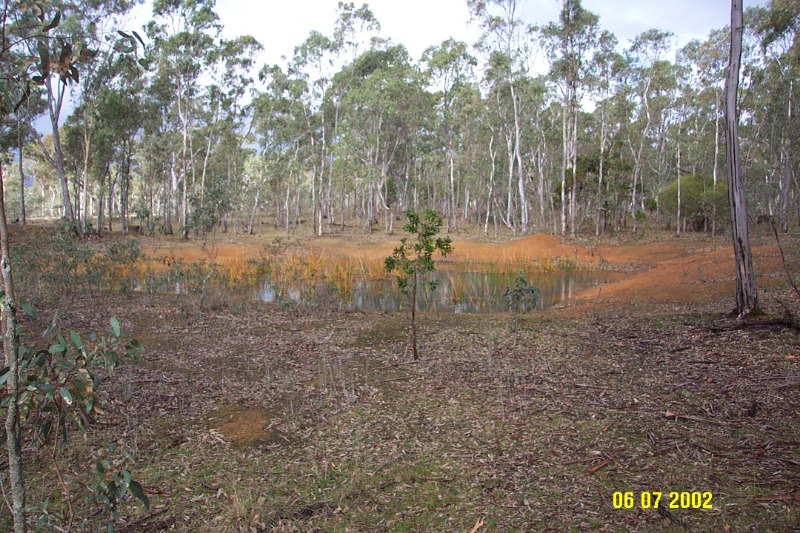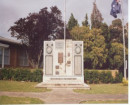UNEMPLOYED WORKERS' RELIEF CAMP
Henty Highway WOOHLPOOER, Southern Grampians Shire
-
Add to tour
You must log in to do that.
-
Share
-
Shortlist place
You must log in to do that.
- Download report


Statement of Significance
The Forests Commission established Woohlpooer Unemployed Workers' Relief Camp about 1930 against a background of increasing economic and social distress caused by the Great Depression. It is located off the Henty Highway, about 2.5kms north of the settlement of Woohlpooer and about 50.0kms north-north-east of Hamilton. The Woohlpooer Reserved Forest and Section 21 of the Parish of Woohlpooer, including the present site, had been gazetted as State Forest in 1913. The land had previously been grazed as part of the vast Glenisla squatting run until about 1890. Consequently, by 1930, there was forty years of regrowth, which was available for harvesting and required management. Many camps were established across the state including special camps for unemployed youths. As well as timber getting, there were other minor but traditional forest industries such as charcoal burning, wattlebark stripping and even eucalyptus distillation. Charcoal was to become critical as a substitute fuel during the Second World War. Some unemployed workers' camps became internment and prisoner of war camps during the war. At its height, the camp appears to have consisted of a large square area defined by a fence with a row of at least five small timber cabins against the western boundary, an ablution block, two other larger timber buildings possibly used as a mess hall or for other communal purposes and a reservoir. The huts had chimneys built of field stone rubble. A road swept in a curve from the south-west corner to the north-east corner. The structures were removed after the Second World War. Other archaeological remains survive. There is also an earth dam, which appears to be modern. The camp appears to have been superseded by commercial operations and abandoned by the early 1950s.
How is it significant?
The Woohlpooer Unemployed Workers' Relief Camp is of historical and archaeological significance to the Southern Grampians Shire as a Heritage Inventory Site.
Why is it significant?
The Woohlpooer Unemployed Workers' Relief Camp is of historical significance as a representation of the state government's response to the various and sometimes conflicting political forces current during the Great Depression and afterwards. It is of archaeological significance for its potential to illustrate and explain that response.
-
-
UNEMPLOYED WORKERS' RELIEF CAMP - Physical Conditions
The remains of the camp site are in very good condition, and the archaeological potential of the site is high.
UNEMPLOYED WORKERS' RELIEF CAMP - Physical Description 1
The archaeological site is located approximately 250 metres east of the Henty Highway, in the Woohlpooer State Forest, about 2.5kms north of the intersection of the Woohlpooer Road and the Henty Highway and about 50.0kms north-north-east of Hamilton. The camp site is situated on the north side of a well defined dirt track, within a fenced enclosure of about half a hectare.
Along the western fence line, the remains of a series of small huts can be distinguished. These remains consist of timber stumps and chimney bases of field stone rubble. There were at least 5 of these huts in a row along the western boundary. Close by are the timber stumps of other buildings, including an L shaped structure, and a concrete foundation. At the northern edge of the enclosure, the remains of a rubbish dump are visible, as well as a large underground cistern, with surviving roofing iron and timbers. The outline of a road sweeping in a broad curve through the camp site is clearly visible. To the east of the camp is a dam or reservoir, which appears to be of a later date. Scraps of metal, leather and glass can be seen among the rubble and timber stumps.
"Woohlpooer State Forest is predominantly an even aged open woodland comprised almost exclusively of River Red Gum with a grassy understorey. The majority of trees in the forest are 100-year-old regrowth that originated following the removal of the grazing in 1890." (DNRE, 2002)
"All buildings from this FCV camp within a large fenced enclosure have been removed leaving a 30m long double row of wooden stumps with some small heaps of building material, a square concrete slab measuring 3.2 x 3.2m, two or three rectangular arrangements of wooden stumps and an interesting reservoir with ditches. There was also quite an extensive rubbish dump covering about 30sqm comprising bottles and cans on the N side of the fence near the reservoir." (Story, 1995)UNEMPLOYED WORKERS' RELIEF CAMP - Historical Australian Themes
5.2.1 Timber getting (sawmills, tramway, camps etc.)
UNEMPLOYED WORKERS' RELIEF CAMP - Usage/Former Usage
Forestry camp
UNEMPLOYED WORKERS' RELIEF CAMP - Integrity
low degree of inegrity for above ground remains.
UNEMPLOYED WORKERS' RELIEF CAMP - Physical Description 2
Unemplyed workers during the Great Depression
[possibly] Internees and prisoners of war during WW2UNEMPLOYED WORKERS' RELIEF CAMP - Physical Description 3
Woohlpooer State Forest reserve
Heritage Study and Grading
Southern Grampians - Southern Grampians Shire Heritage Study
Author: Timothy Hubbard P/L, Annabel Neylon
Year: 2002
Grading:
-
-
-
-
-
UNEMPLOYED WORKERS' RELIEF CAMP
 Southern Grampians Shire
Southern Grampians Shire -
ROWE'S SAWMILL SITE
 Southern Grampians Shire
Southern Grampians Shire
-
1) ST. ANDREWS HOTEL AND 2) CANARY ISLAND PALM TREE
 Nillumbik Shire
Nillumbik Shire
-
-











